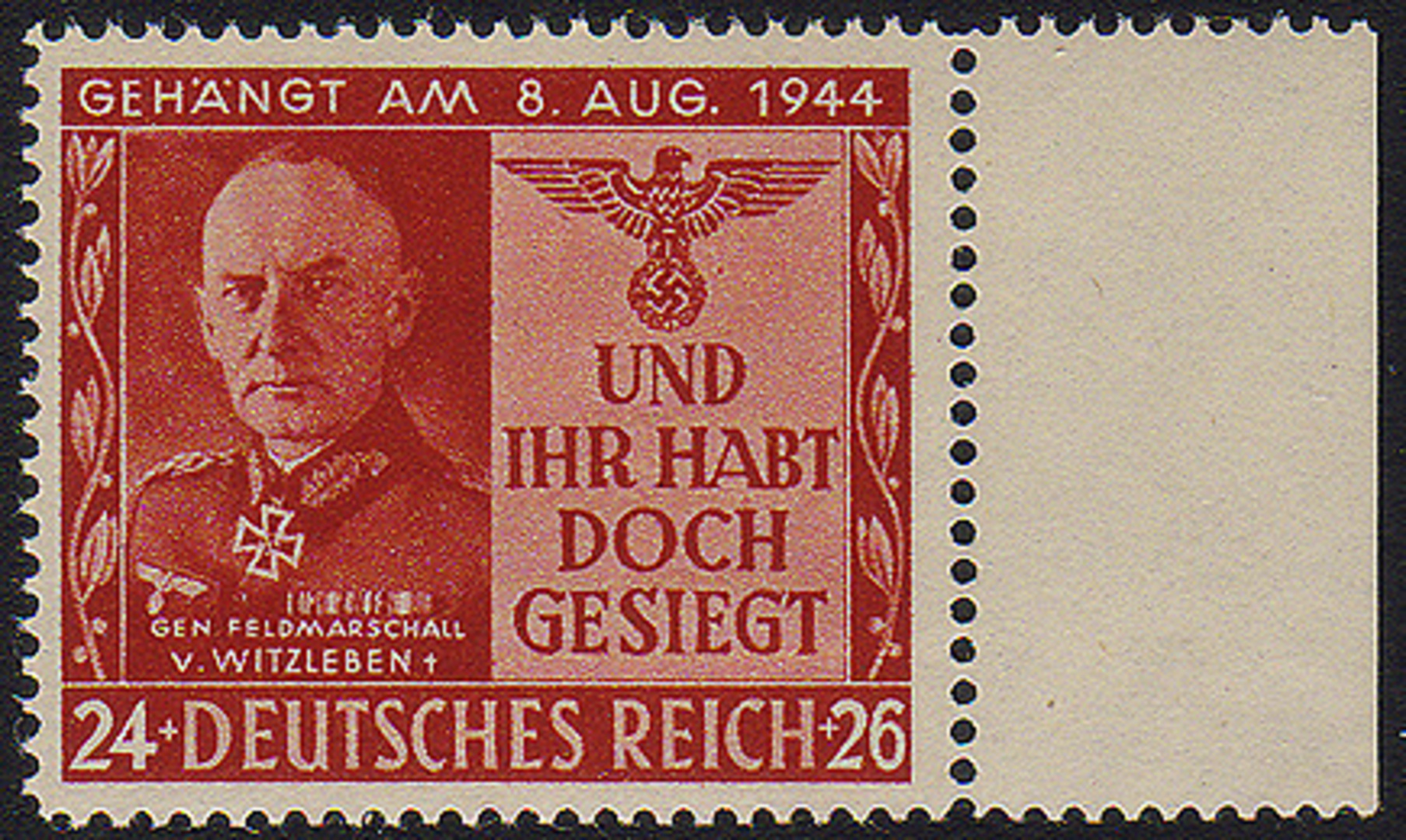During the Second World War, various propaganda forgeries of enemy stamps were produced by both sides. Their main purpose was to depict various propaganda messages, and to a lesser extent (because they were usually easily recognisable and so quickly withdrawn by the authorities), to cause confusion.
The British Intelligence produced several propaganda forgeries of German stamps in very good quality, using regular postage stamp production facilities in England. One of them is the 'General von Witzleben' forgery, made in late 1944.
General Erwin von Witzleben (1881-1944) was a high ranking German army officer (by 1940, a Generalfeldmarschall). He fought in the First World War, and later between wars, served in various positions in the German army. Early after Hitler coming to power in 1933, he took up a position against the Nazi regime. He took part in several plots and conspiracy plans, and for a while was even forced into early retirement.
In September 1939, he assumed command over the First army in the West, with which he broke through the Maginot line in June 1940. Later in 1940, he was appointed the Commander of Army Group D, and in 1941, Commander-in-Chief West. Only a year later however, he officially took leave of his position for reasons of ill-health, although some sources claim that he was forcibly retired after criticising the regime after the invasion of Russia. He was the highest ranking officer, taking active part in the unsuccessful attempt to assassinate Hitler on 20th July 1944. He was arrested, tried and executed on 8th August 1944.
The British Intelligence produced a skilful propaganda forgery of the Germany 1943 24pf+26pf brown-red Putsch stamp. The forgery shows a portrait of General von Witzleben, instead of that of a storm trooper. An inscription at the top reads 'Gehangt am 8. Aug. 1944', meaning 'Hanged on 8th August 1944'. The forgery was printed in photogravure in sheets of 20 stamps (4x5).


 General
General
 General
General
 General
General